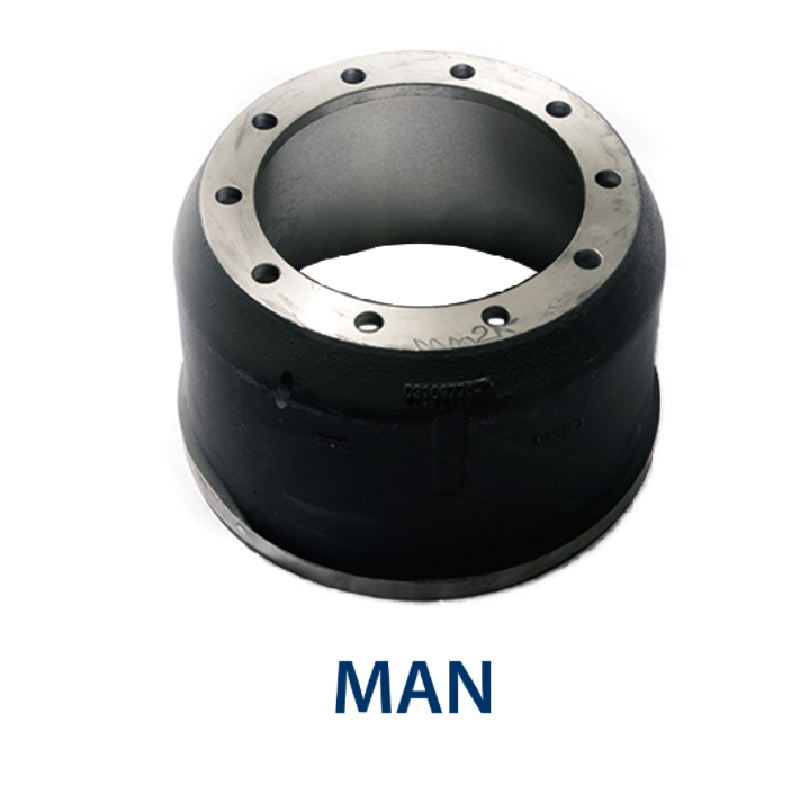Dec . 03, 2024 16:49 Back to list
brake drums parts
Understanding Brake Drums and Their Parts
Brake drums play a pivotal role in the braking system of vehicles, particularly in older cars and many heavy-duty vehicles. While modern cars often utilize disc brakes, brake drums continue to be a crucial component in various applications due to their efficiency and performance under load. In this article, we will explore the anatomy of brake drums, their essential parts, and their function within the braking system.
What is a Brake Drum?
A brake drum is a cylindrical component that functions as a friction surface for braking systems. When the driver presses the brake pedal, hydraulic fluid is sent to the brake shoes within the drum assembly. This causes the brake shoes to expand outward, pressing against the inner surface of the drum and generating the necessary friction to slow down or stop the vehicle.
Key Components of Brake Drums
1. Brake Drum The main component, usually made of cast iron or a similar durable material, forms the outer casing of the assembly. Its surface must be smooth to ensure effective contact with the brake shoes.
2. Brake Shoes These are curved pieces of friction material that interact with the brake drum. When engaged, the brake shoes press against the inner surface of the drum, converting kinetic energy into heat, thereby slowing the vehicle. Brake shoes can wear out over time and may need to be replaced to maintain effective braking performance.
3. Return Springs These springs are responsible for retracting the brake shoes back to their original position after the brake pedal is released. A properly functioning return spring ensures that the shoes do not drag against the drum when the brakes are not in use, preventing unnecessary wear and heat generation.
4. Adjuster The adjuster is a mechanism that compensates for the wear of the brake shoes. As the friction material wears down, the adjuster maintains the proper distance between the shoes and the drum, ensuring optimal braking performance. Most modern brake drum systems feature automatic adjusters that adjust the position of the shoes as needed.
brake drums parts

5. Backing Plate The backing plate serves as a structural support for the brake components. It holds the brake shoes, return springs, and the adjuster in place, providing a foundation for the entire drum brake assembly.
6. Wheel Cylinder Located on the backing plate, the wheel cylinder houses pistons that push the brake shoes outward when hydraulic pressure is applied. The wheel cylinder is an essential component in drum brake systems, as it translates hydraulic force into mechanical force, engaging the brake shoes.
The Functionality of Brake Drums
Understanding how brake drums work is vital in appreciating their importance in vehicle safety. When the brake pedal is pressed, the hydraulic pressure created by the brake master cylinder flows into the wheel cylinder, pushing the pistons outward. This action forces the brake shoes to pivot and press against the inner surface of the brake drum, creating friction.
The friction produced slows down the rotation of the wheel, causing the vehicle to decelerate. The heat generated during this process is dissipated through the brake drum, which is designed to withstand high temperatures. However, over time and with continuous use, brake drums can warp or become scored, negatively affecting performance.
Maintenance and Care
Regular maintenance of brake drums is essential for safe vehicle operation. Drivers should periodically check the condition of the brake shoes and drums, looking for signs of wear or damage. It is recommended to replace brake shoes before they are worn down to the metal backing to prevent damages to the drums. In addition, adjusting the brake system can improve performance and extend the life of the components.
Conclusion
In conclusion, brake drums and their associated parts are critical to the braking performance of many vehicles. Understanding their construction and functionality not only enhances your automotive knowledge but also encourages proper maintenance practices. Given their role in ensuring safe driving, making informed decisions about brake drum care and replacement is essential for every vehicle owner. Whether you drive a classic car or a heavy truck, appreciating the complexity of brake drums can greatly contribute to your vehicle's safety and longevity.
-
Scania Brake Drums: OEM Quality for Optimal Safety & Durability
NewsAug.16,2025
-
R.V.I: Advanced Remote Visual Inspection for Precision
NewsAug.15,2025
-
Discover HYUNDA: Innovative Vehicles, Equipment & Solutions
NewsAug.14,2025
-
R.V.I: Unlock Advanced Insights & Real-time Performance
NewsAug.13,2025
-
Kamaz Brake Drum: Durable & Reliable for Heavy Duty Trucks
NewsAug.12,2025
-
Heavy Duty Iveco Brake Drum - Premium Quality & Safety
NewsAug.11,2025
